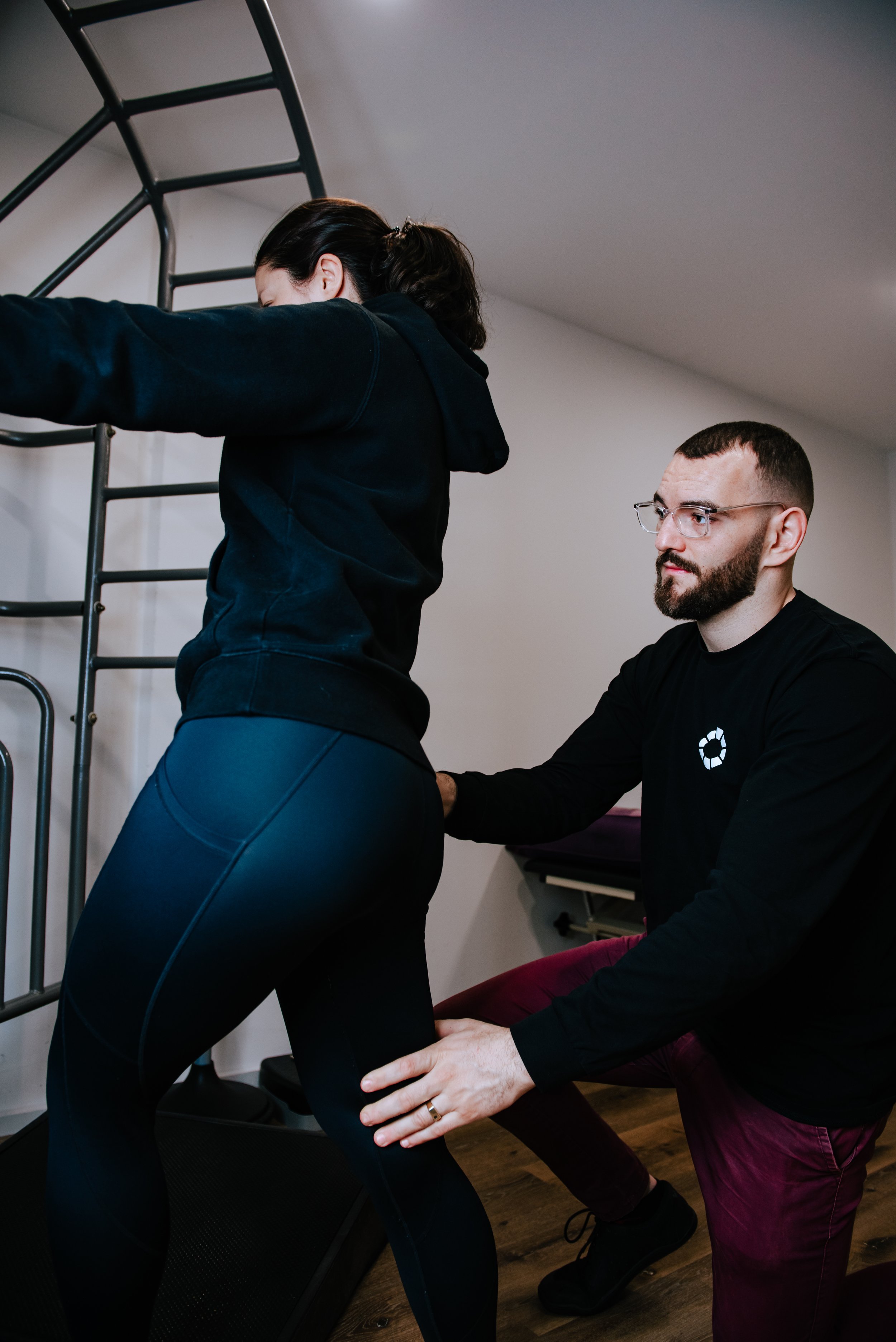Hip Injuries in Boxing: Causes, Prevention, and Recovery.
Boxing is a sport of precision, power, and quick reflexes—all of which are heavily dependent on the hips. Whether you're throwing a knockout punch, pivoting away from an opponent's strike, or generating power for a body shot, your hips are working overtime to provide strength, stability, and mobility. However, with these high demands comes the potential for hip injuries, which can disrupt training and performance in the ring.
In this blog, we’ll explore the most common hip injuries experienced by boxers, their causes, how they can impact performance, and how we approach prevention and treatment at Mixed Osteo.
Common Hip Injuries in Boxing
Boxing involves repetitive, high-intensity movements that place strain on the hips. Over time, these demands can lead to acute or chronic injuries. Here are some of the most common hip injuries seen in boxers:
Hip Flexor Strains:
Frequent in boxing due to repetitive hip flexion during punching, pivoting, and movement. Tight or overused hip flexors can result in muscle strains, causing pain and limiting mobility.Labral Tears:
The hip labrum stabilises the joint, but repetitive rotational forces from punching or pivoting can damage this cartilage. Labral tears often result in pain, stiffness, or a feeling of the hip "catching."Hip Impingement (FAI):
Femoroacetabular impingement (FAI) occurs when there is abnormal contact between the hip bones during movement. This can cause pain in the groin area, particularly when pivoting or kicking.Hip Bursitis:
Inflammation of the hip bursa can occur from repetitive impact, poor technique, or overuse, leading to pain and swelling around the hip joint.Gluteal Tendinopathy:
Poor hip stabilization or muscle imbalances can lead to irritation or injury of the tendons in the gluteal region, causing pain in the lateral hip.
How Do These Injuries Affect Boxers?
Boxing places immense physical demands on the hips, requiring them to handle rotation, impact, and stability all at once. A hip injury can significantly affect a boxer’s performance by:
Reducing mobility and range of motion, making it harder to rotate or pivot effectively.
Decreasing stability is crucial for maintaining balance during strikes and defensive maneuvers.
Impairing power generation, as the hips play a key role in transferring force from the lower body to the upper body.
Increasing the risk of secondary injuries, such as lower back pain or knee injuries, due to compensation.
Ignoring hip pain or pushing through the discomfort often exacerbates the issue, leading to longer recovery times and a greater risk of chronic problems.
Causes of Hip Injuries in Boxing
Several factors contribute to the development of hip injuries in boxers, including:Repetitive Rotational Forces: The constant pivoting and twisting involved in punching and footwork place significant strain on the hip joints and surrounding structures. Over time, these repetitive forces can lead to wear and tear.Poor Technique or Biomechanics: Incorrect punching form or inadequate footwork can overload the hips, causing strain and injury.Muscle Imbalances: Weakness in the glutes or core muscles can force the hips to compensate, increasing the risk of overuse injuries. Tight hip flexors or hamstrings can also restrict movement and contribute to imbalances.Overtraining Without Recovery: Insufficient rest between training sessions can lead to overuse injuries, as the hips don’t have enough time to recover and repair.Trauma: Sudden impacts or awkward falls during training or sparring can cause acute hip injuries, such as strains or labral tears.
How Mixed Osteo Treats Hip Injuries in Boxers
At Mixed Osteo, we understand that no two injuries—or athletes—are the same. Our approach to treating hip injuries in boxers involves a combination of assessment, treatment, and rehabilitation tailored to the individual’s needs.
1. Comprehensive Assessment
We start by identifying the root cause of your hip pain. This involves a detailed examination of your movement patterns, posture, and biomechanics, as well as understanding your training habits and injury history.
2. Manual Therapy
Hands-on techniques are used to reduce pain, improve joint mobility, and release tight muscles. This can include soft tissue therapy, joint mobilisation, and functional manual reactions (FMR) to address restrictions and improve movement.
3. Strength and Conditioning
Targeted exercises are introduced to strengthen the hip and surrounding muscles, such as the glutes, hamstrings, and core. A focus is placed on restoring stability and building resilience to prevent future injuries.
4. Functional Rehabilitation
Rehab exercises are designed to mimic the demands of boxing, ensuring that the hips can handle the rotational forces, impact, and balance required in the ring. This may include movements like rotational lunges, single-leg stability drills, and resistance band exercises.
5. Education and Prevention
We empower our athletes with the knowledge to prevent future injuries. This includes advice on proper warm-ups, recovery techniques, and strategies to correct imbalances or poor biomechanics.
Preventing Hip Injuries in Boxing
Prevention is always better than cure. Boxers can reduce their risk of hip injuries by:
Incorporating Mobility Work: Regularly stretching and mobilising the hips to maintain flexibility.
Strengthening Key Muscles: Building strength in the glutes, core, and hamstrings to support the hips.
Practising Proper Technique: Ensuring correct punching form, footwork, and movement patterns.
Balancing Training and Recovery: Allowing adequate rest between sessions to prevent overuse injuries.
Warming Up Effectively: Preparing the hips for the demands of training with dynamic stretches and activation drills.
Hip injuries in boxing can be debilitating, but they don’t have to be career-ending. With the right approach to treatment and prevention, boxers can recover from hip pain and get back to performing at their best. At Mixed Osteo, we help athletes overcome injuries and build resilience through tailored treatment and rehabilitation programs.
If you’re struggling with hip pain or want to improve your performance, book an appointment with us today. Let’s keep you fighting fit!


